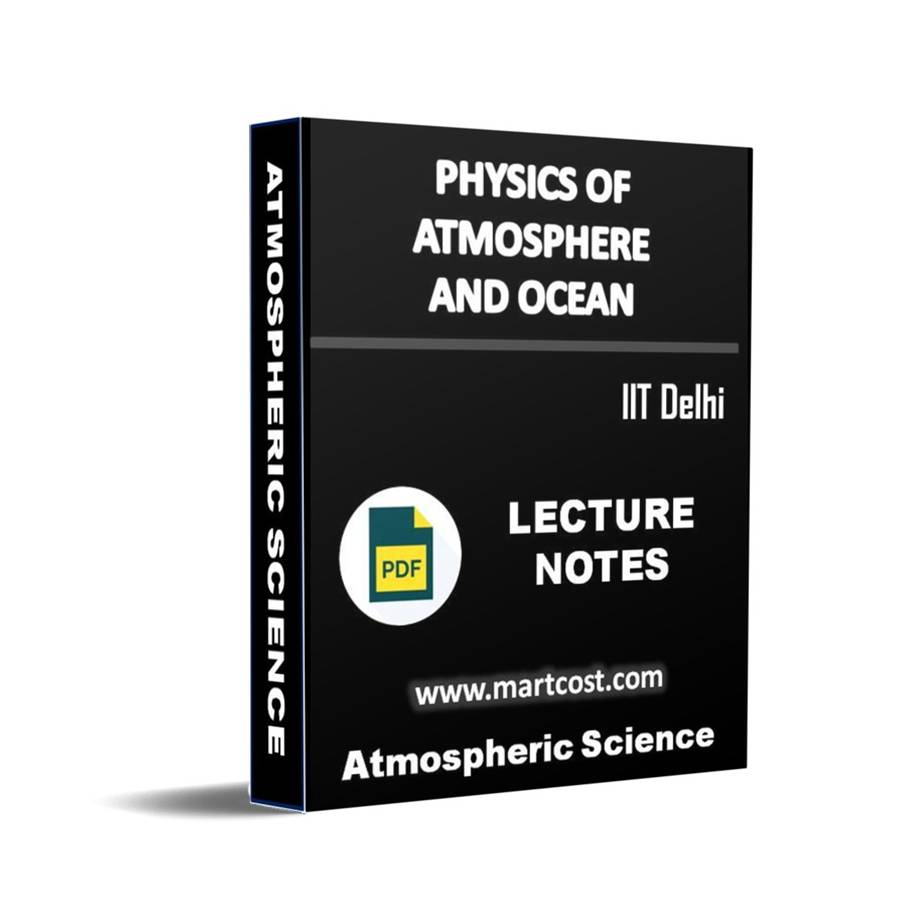Description
Name of Notes : – Physics of Atmosphere and Ocean Lecture Note
Introduction
Within the atmospheric sciences, atmospheric physics is the application of physics to the study of the atmosphere. Atmospheric physicists attempt to model Earth’s atmosphere and the atmospheres of the other planets using fluid flow equations, chemical models, radiation budget, and energy transfer processes in the atmosphere (as well as how these tie into boundary systems such as the oceans). In order to model weather systems, atmospheric physicists employ elements of scattering theory, wave propagation models, cloud physics, statistical mechanics and spatial statistics which are highly mathematical and related to physics. It has close links to meteorology and climatology and also covers the design and construction of instruments for studying the atmosphere and the interpretation of the data they provide, including remote sensing instruments. At the dawn of the space age and the introduction of sounding rockets, aeronomy became a sub discipline concerning the upper layers of the atmosphere, where dissociation and ionization are important.
Modules / Lectures
- Basic Meteorology and Oceanography I
- Basic Meteorology and Oceanography II
- Atmospheric Thermodynamics I
- Atmospheric Thermodynamics II
- Atmospheric Thermodynamics III
- Ocean Physics I
- Ocean Physics II
- Ocean Physics III
- Radioactive Transfer in Atmosphere and Ocean I
- Radioactive Transfer in Atmosphere and Ocean II
- Radioactive Transfer in Atmosphere and Ocean III
- Heat-induced Tropical Circulations






Reviews
There are no reviews yet